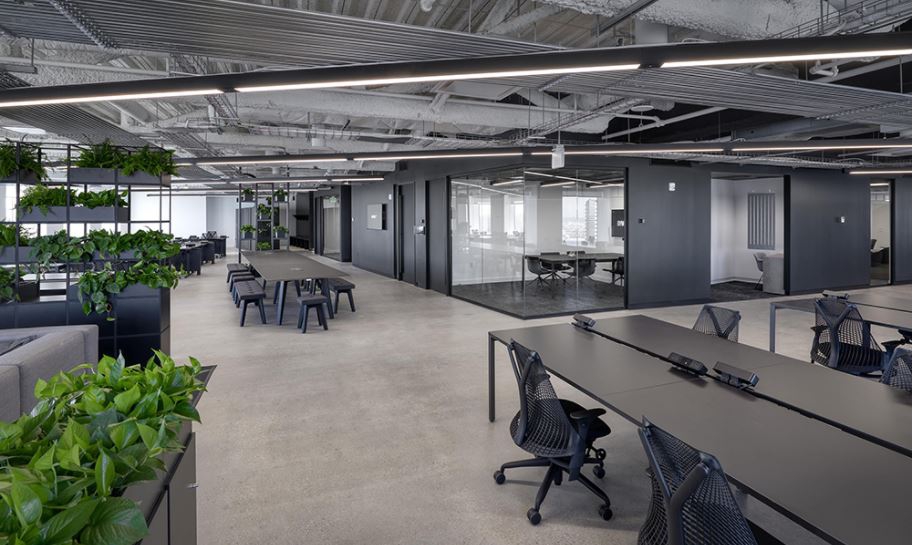
Top 8 Workplace Trends For 2022
If the past two years have taught us anything, we know that flexibility in policies, procedures, and in the physical workplace itself are critical to an organization’s long-term vitality.
The workplace is changing quickly. Advances in technology, regulation developments and societal trends continue to throw up fresh challenges and opportunities. In order to flourish, companies must be prepared to adapt every aspect of their workplace design. Giving employees choice and understanding their needs will be key to the success of the workplace.
So, here at Spacestor, we’re sharing our top 8 workplace trends for 2022.
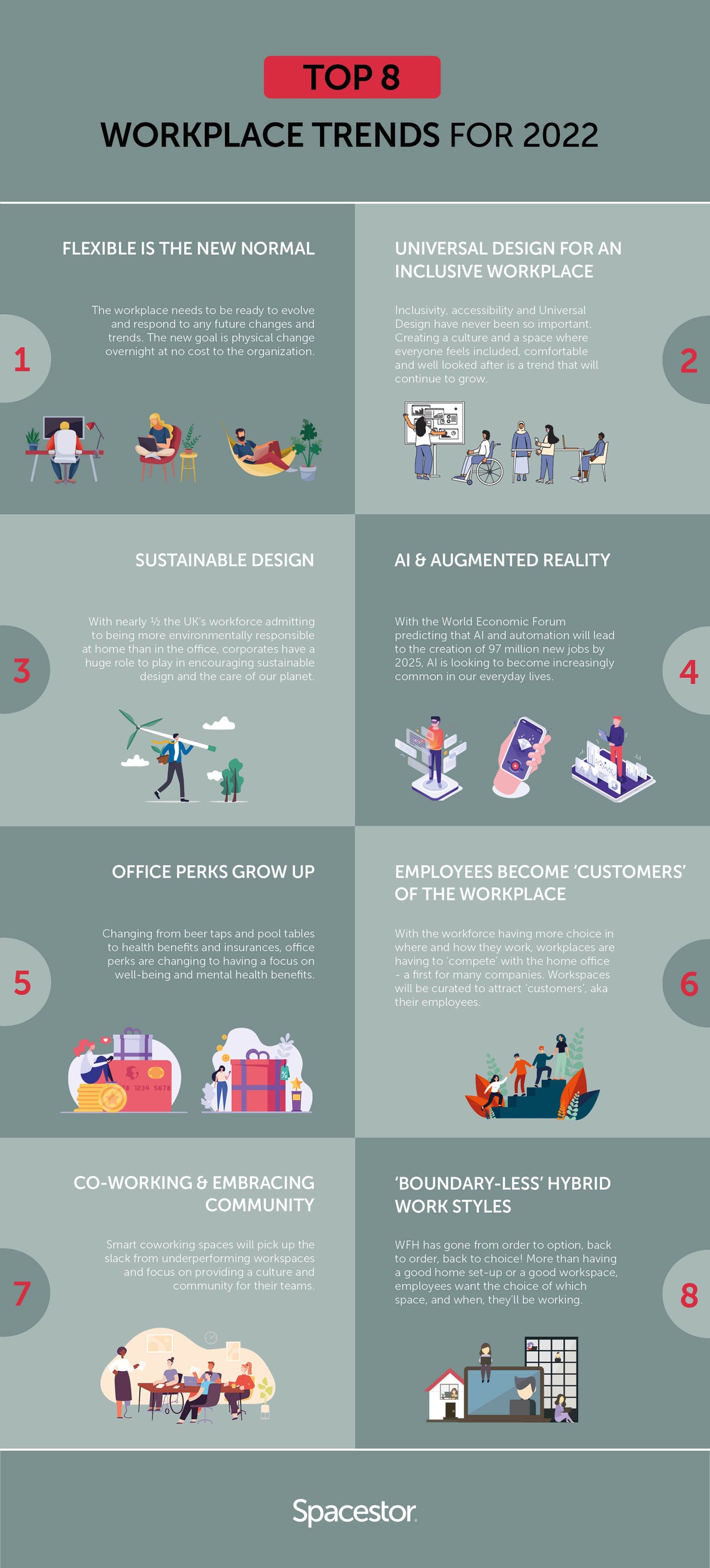
The move towards activity-based working has been growing for a very long time. To be effective in catering to ever-changing needs, it is key the physical workplace remains modular and flexible, one which can be physically reconfigured; either by space managers or by the users themselves. A team space can be created from solo seats, meeting rooms can reconfigure into private offices as daily activities change from intense brainstorming to heads-down work, all seamlessly facilitated by systems with built-in flexibility.
One thing we have learnt is that the workplace needs to evolve and be ready for anything, workplaces need to be able to respond to any uncertainty with solutions that create compelling settings for organizations to be successful and allow their most valuable asset—their people, to thrive and be their best.
The new goal is physical change overnight at no cost to the organization. The number of people in the workplace is dynamic, increasingly driven by employee choice of when and where to work, so the workplace needs to accommodate many employees with effective places to collaborate, socialize, and focus. To achieve this modular furniture and design is key.

Inclusivity has been an important consideration for some time, and this continues to sit at the forefront of workplace design now. Although we’ve seen tough days over the last two years, we have also seen incredible community spirit. Individualism has a place, but what we need now is to unlock the power of all. "Togetherness" and community don't just give us meaning. They give us results. There are differences in preferences for different generations, and people who are in different situations – Gen Z, Millennials, Boomers, how things have changed if we have kids or pets, workplaces need to accommodate for all. Companies have been making huge improvements in more inclusive designs, but there is still a need to push this ahead and will be a topic high on the agenda for companies wishing to increase the diversity of their talent next year.
In 2022, we expect to see a rise in purpose-led organizations, with more collaboration, and empowerment no matter your background, experience, gender, or race. Organizations will need to address the issues of “invisible people and unheard voices” to unlock the true power and potential of a universal design. Harnessing the collaborative power of diverse teams takes some doing. Companies have a lot to gain by becoming more “we” than “me”. Research shows that diverse and inclusive teams are better at solving complex problems, are more innovative and make better decisions 87% of the time.
Sustainability is a current trend, but it’s important to note it’s more than a trend and is here to stay. The importance of sustainability has grown for companies across all different sizes, sectors, and regions for some time, and there has been some good movements towards a greener society over the last couple of years, but people don’t want to lose this momentum. Nearly half of the UK workforce admits to being more environmentally responsible at home than they are in the office. Companies are also feeling pressure from their customers and their competitors to become more sustainable, yet at the same time, they acknowledge that sustainability is a growth driver. In fact, sustainability is cited as the fourth biggest growth driver among companies looking to expand.
Making use of furniture rather than built alternatives is generally a much more sustainable option and is growing in popularity. There is the sustainability of not having to build something; building a fixed construction room takes a lot of time and resources, there is added disruption with building materials, and when it is time to change or adapt, the space needs to be deconstructed and rebuilt. With modular meeting rooms and similar modular furniture, the sustainability aspect isn't just from the material of the product, it is also from the use of the product.

The World Economic Forum predicts that AI and automation will lead to the creation of 97 million new jobs by 2025. AI is looking to become increasingly common in our everyday lives; augmented analytics for high-level strategy, AI and Augmented systems for collaboration with distributed teams and remote colleagues, and as a way to communicate with customers and clients. This could be, perhaps less face-to-face meetings so virtual tours, AR product demonstrations, and even AR meetings in virtual spaces will be useful tools to assist with collaboration and demonstrations.
With the new hybrid working environment, we see more people expressing a need for apps and software that can help with logistics of where people work, for instance being able to reserve their desk the day before they’re due in, to help alleviate the anxiety colleagues might feel day today.

SCUBA course and botox perks are being replaced with shopping perks, health benefits and insurances. Ten years ago, a workplace trends article like this probably would have mentioned the rise in office nap pods or explained why 2012 was the year every company would have beer taps, pool tables and pizza Fridays. However, we’re seeing the separation of office perks and the physical office, meaning benefits are no longer intrinsically linked to the buildings in which we work. Perkbox surveyed more than 1,500 UK employees to ask which perks they wanted moving forward, and there’s not a single beer tap or ping pong table in sight. With top perks being: employee discounts (shopping / eating out / etc), greater holiday, at home entertainment (Netflix etc), and insurances and health care policies. Employees crave more well-being and mental health benefits or support at work!
A trend that’s started going in the right direction and should continue to do so in 2022. Planning for ways that employees can adjust and adapt to the changing and evolving environment easily, whilst still maintaining productivity is key for staff retention and attracting new talent. The one thing people have missed whilst being at home is the sense of community, networking, relationship building and socialising you experience with your colleagues. However, with the workforce having more choice in where and how they work, workplaces are having to ‘compete’ with the home office- a first for many companies. Offering workplaces that are ‘contractor’ grade but looks good enough to put in your home, so employees feel a sense of welcome and warmth but also get the solutions they need to get the job done. It is equally important to recognise and provide for those who are struggling with the stresses and anxieties that exist at the moment. Reports have highlighted fears over financial and job security, employees feeling stressed, and being unable to socialise with feelings of isolation. Companies that cater to these innate human needs by fostering a caring, supportive culture in the workplace can expect greater commitment and engagement from employees
Corporations will struggle with their identity as their workers have changed the game and aren’t easily engaged. It was already hard to build culture, but it will be even more challenging when you can’t gather your workers in one place. Smart coworking spaces will pick up the slack and focus on providing a culture and community for their teams. Babysitting, podcast rooms, rooftop gardens, meditation rooms are amongst some of the key amenities that people want. Well-being and health is a key focus, and a workplace that can offer this will be even more important in 2022, but offering that alongside satisfying a social craving will be appealing to most people in the modern workforce.
Culture is about bringing your people together, not all the time, but some of the time. It's about sharing knowledge, experience and interests. Particularly with the newer colleagues or with younger colleagues, who've come into an organisation, now more than ever as this generation of ‘pandemials’ may not have ever worked in an office prior to the pandemic. Catering for a community that reflects the company’s brand and culture will be important for attracting and retaining future talent.
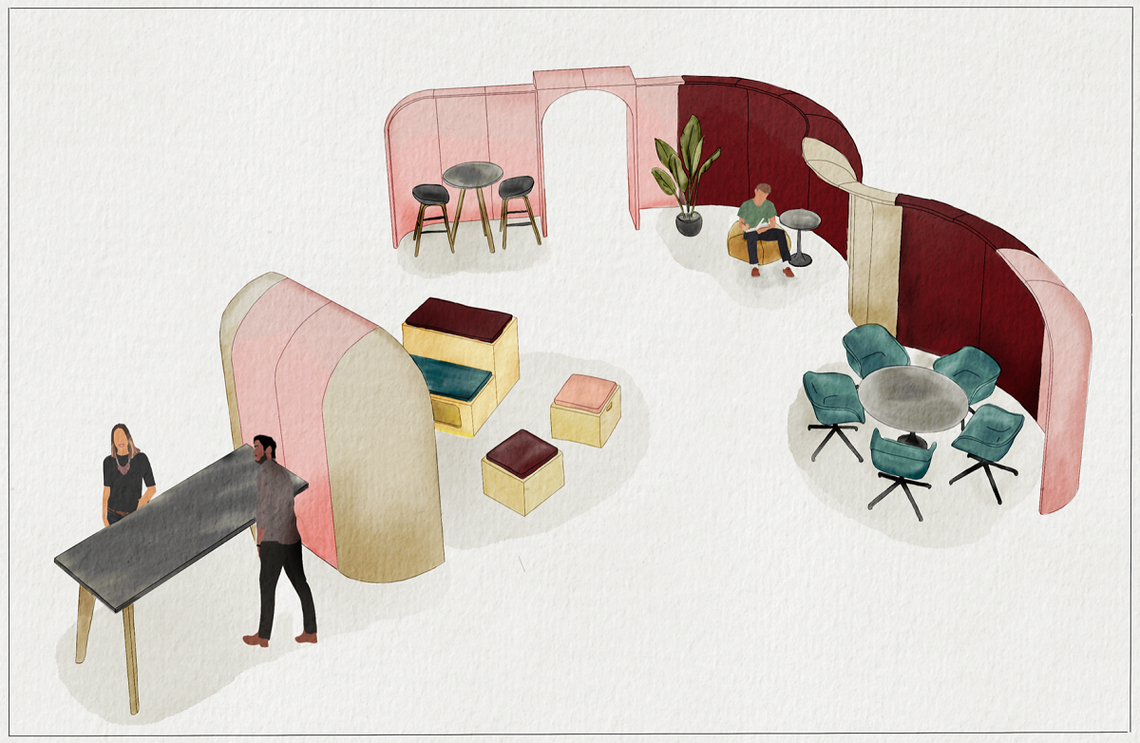
Depending on where you are in the world, work from home may have gone from order to option, back to order, back to choice. It’s been a turbulent couple of years from that perspective! Boundary-less simply means you can work anywhere, something that many of us have experienced in recent months. Hybrid, hub and spoke, flexible, coworking – all of these are boundary-less hybrid working styles. Offering employees the choice of moving between spaces and places, choice in seating and desk locations, offering task-based working is important in talent attraction. Employees want what’s important to them, to be cared about and they want a healthy space to perform their duties.
Spaces need to be optimised to provide the best environment for their workers, to enable them to perform tasks to the best of their abilities. The game has changed and the power is with the people. This is when you figure out who you are and make big changes or you will be left behind.
2022 is going to be an exciting year. It will be a year with more choice and preference in where and how we work, with companies optimizing for the best experience. Talent acquisition and retention are high on business priorities, and people will be looking to make the most of opportunities to collaborate.
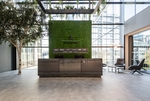
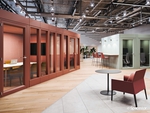
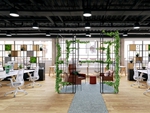
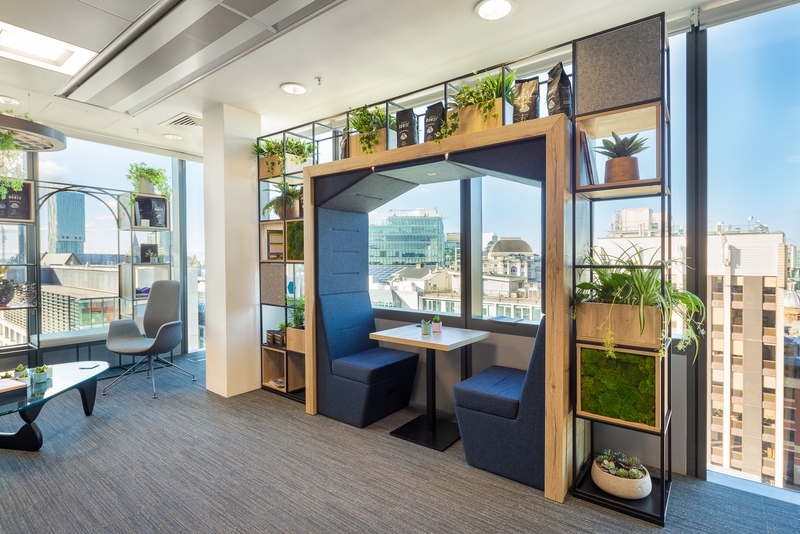
Spacestor's brand new Manchester design centre provides an inspiration hotspot for the workplaces of today
ARCHITECTURE & DESIGN

An experiential and destination space for architects, designers and workplace strategists looking to discover ways to c…
ARCHITECTURE & DESIGN
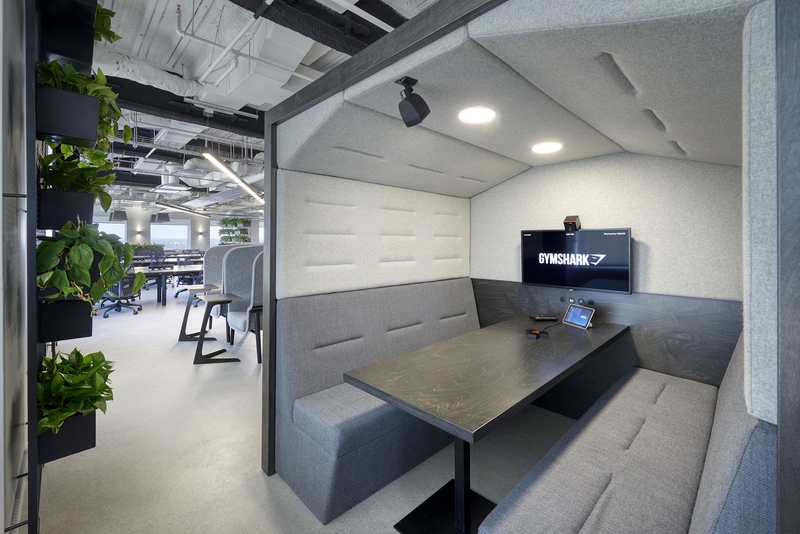
Bold and on-brand, Oktra has designed another stunning workplace, this time in Denver Colorado, for fitness apparel bus…
RETAIL